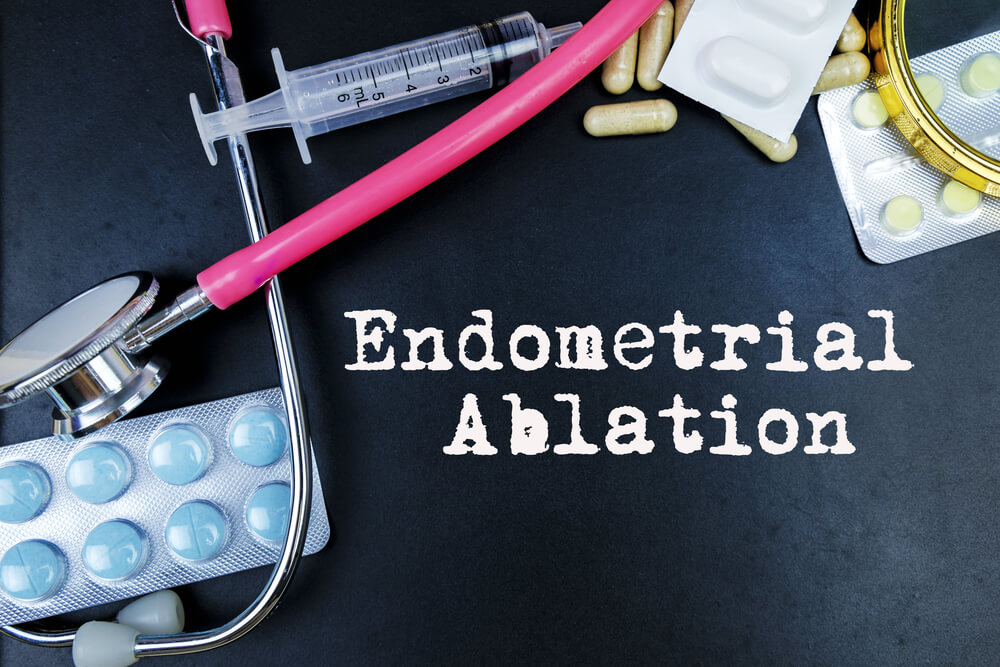If you are considering endometrial ablation but are unsure what it is and whether it is a suitable choice for you, you’ve clicked on the right article. Below, you will discover all the facts about uterine ablation, including who it is for, the potential risks and complications, the recovery time, and the general outlook. Before getting started, we want to stress the importance of seeking out medical help at a reliable clinic. Always turn to a healthcare professional for expert advice and guidance. If you are on the lookout for the best experts in the field, consider endometrial ablation in Miami, Florida.
What is Endometrial Ablation?

Endometrial or uterine ablation refers to a procedure that involves the destruction of the uterine lining. Usually, women who struggle with heavy or abnormally long periods are potential candidates for endometrial ablation. The overall aim of this procedure is to permanently alter the uterine lining and to significantly reduce or completely stop the menstrual flow. It should be considered a less invasive alternative to hysterectomy.
According to a study from 2015, endometrial ablation is an effective way to treat abnormal uterine bleeding. Abnormal bleeding can be defined by the following:
- Bleeding between menstrual cycles
- Menstrual periods that last over a week
- Extremely heavy periods (the patient needs to change tampons every hour)
- Anemia due to excessive bleeding
- Bleeding that results in other health issues
In fact, about 30 percent of female patients seek out the help of a professional for abnormal uterine bleeding during their lifetime. By opting for endometrial ablation, the patient will either completely stop having periods, or the procedure could reduce the severity of the bleeding. Remember that the procedure is only performed on female patients who are not pregnant and not planning for pregnancy in the future. It is also a procedure that is done when other treatments, such as medications or intrauterine devices, have not been successful.
Who Is Not a Good Candidate for Uterine Ablation?
Endometrial ablation is an effective procedure for stopping heavy menstruation that affects overall quality of life. If the severe bleeding is causing other health complications such as anemia, endometrial ablation could be very helpful. However, this procedure is not suitable for all patients. This procedure is not suitable for patients who have:
- A cervical or vaginal infection
- Current pregnancy or desire for future pregnancy
- Diagnosis of menopause
- Cervical, uterine, or endometrial cancer
- Pelvic inflammatory disease or PID
- An infection of the uterus
- An intrauterine device or an IUD
- A thinning of the wall of the uterus (from a prior myomectomy or cesarean section)
- A uterine anomaly (such as a septum or unicornuate uterus)
Types of Endometrial Ablation
Endometrial ablation does not require surgical incisions, so it can either be performed in an office or at an outpatient facility. Before the procedure, the healthcare professionals will take a sample of the uterine lining and test it for pre-cancerous or cancerous cells. This procedure is called an endometrial biopsy. This is a necessary step as women with cancer are not suitable candidates for the procedure.
Typically, your healthcare provider will perform or order a pelvic ultrasound prior to the endometrial ablation. By doing this, benign findings such as fibroids or polyps that could possibly cause heavy menstruation can be ruled out. Your doctor will also check whether you are pregnant. If you have an intrauterine device, you will have to remove it before the uterine ablation procedure.
Overall, there are six types of endometrial ablation. These include:
- Hydrothermal: The expert will pump fluid into the uterus and heat it for 10 minutes to destroy the uterine lining.
- High-energy radio waves: An electrical mesh (called a Novasure device) is inserted into the uterus and expanded to contact the uterine lining directly. As the strong radio waves pass through this mesh, the device begins to heat up, destroying the uterine lining itself.
- Electrical: A rare practice used to destroy the lining of the uterus with electrical current.
- Freezing: This type is also referred to as cryoablation, and it involves a thin probe with a tip that freezes and destroys the uterus lining.
- Balloon therapy: A balloon is inserted into the uterus via a tube and is filled with heated fluid. As the balloon slowly expands, the uterine lining will be destroyed.
The most common types of endometrial ablation used today are hydrothermal or Novasure ablation.
Potential Endometrial Ablation Side Effects

As with any procedure, risks are always involved. Here are some of the possible endometrial ablation side effects to keep in mind:
- Fever
- Foul-smelling vaginal discharge
- Chills
- Heavy bleeding
- Intense stomach pain or cramping
- Bleeding for several days after the procedure
- Issues passing urine
If you notice any of these side effects, seek out the help of a healthcare professional at once. Never ignore signs and symptoms that could point to health complications that may require the assistance of an expert.
Take care of your health and choose the best. Choosing a reliable clinic and healthcare specialist with years of experience in the field and only positive patient testimonials will reduce the risk of endometrial ablation side effects. When in doubt, choose New Age Women’s Health for the best results.
Endometrial Ablation Recovery
Luckily, the endometrial ablation recovery process is relatively quick and complication-free. Most patients can continue their regular daily routine within only a few days. Some women may experience bleeding and cramping for a few days post-procedure. Some patients may also notice a bloody or watery discharge lasting up to three weeks which is normal. Other common side effects are nausea and the urge to pee for up to one day after the procedure.
Overall, this procedure is suitable for stopping or reducing menstrual bleeding for women who struggle with lengthy or heavy menstrual periods or bleeding between menstrual cycles. As mentioned, this procedure is not suitable for all female patients. For example, patients with cancer or pregnant women are not eligible candidates.
While endometrial ablation is typically associated with high satisfaction and success rates, the procedure is not always successful. If you continue to experience long or heavy menstrual cycles post-procedure, you should seek professional help. Your healthcare provider will recommend another possible treatment. Be aware that when this procedure is done at an earlier age (under age 40), the risk of needing further treatments or procedures in the future is higher. Similarly, if the endometrial ablation procedure was not successful or if the effects start to wear off, there is a chance your doctor will recommend a hysterectomy.





